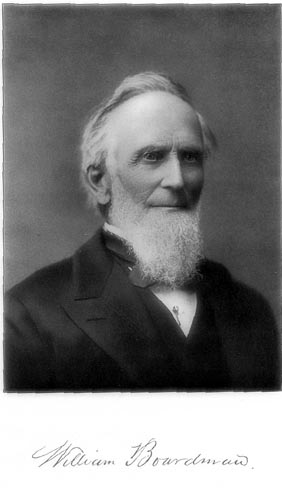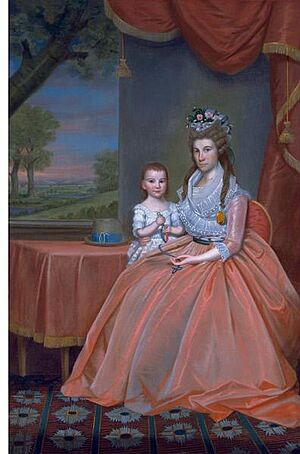William W. Boardman facts for kids
Quick facts for kids
William W. Boardman
|
|
|---|---|
 |
|
| Member of the U.S. House of Representatives from Connecticut's 2nd district |
|
| In office December 7, 1840 – March 3, 1843 |
|
| Preceded by | William L. Storrs |
| Succeeded by | John Stewart |
| Member of the Connecticut Senate | |
| In office 1836-1839 1845 1849-1851 |
|
| Personal details | |
| Born | October 10, 1794 New Milford, Connecticut |
| Died | August 27, 1871 (aged 76) New Haven, Connecticut |
| Political party | Whig, Democratic |
| Spouse | Lucy Hall Boardman |
| Alma mater | Yale College Cambridge Litchfield Law School |
William Whiting Boardman (born October 10, 1794 – died August 27, 1871) was an important politician. He served as a United States Representative for the state of Connecticut.
Early Life and Education
William Whiting Boardman was born in New Milford, Connecticut. His father was Elijah Boardman, who was also a Senator. His mother was Mary Ann Whiting Boardman.
William went to Bacon Academy in Colchester, Connecticut. After that, he graduated from Yale College in 1812. He then studied law in Cambridge, Massachusetts and at the Litchfield Law School from 1816 to 1817. In 1818, he became a lawyer. He opened his own law office in New Haven in 1820.
Political Career
William Boardman held many important jobs in government. In 1820, he worked as a clerk for the Connecticut State Senate. This meant he helped manage the records for the state's Senate.
From 1825 to 1829, he was a judge in New Haven, Connecticut. He handled cases about wills and estates. He also served as a member of the Connecticut State Senate from 1830 to 1832.
Boardman was a member of the Connecticut House of Representatives several times: from 1836 to 1839, in 1845, and from 1849 to 1851. He was even the leader, or Speaker, of the Connecticut State House of Representatives in 1836, 1839, and 1845.
In 1839, he was chosen to represent Connecticut at a big meeting for the Whig political party. He also served in the U.S. Congress. He was elected to the Twenty-sixth Congress and then reelected to the Twenty-seventh Congress. He served from December 7, 1840, to March 3, 1843. During his time in Congress, he led a group called the Committee on Public Buildings and Grounds. This group looked after government buildings and land.
Other Roles and Contributions
William Boardman was also involved in other parts of his community. He was a member of the Governor's Foot Guard, a special military group that protects the governor. He rose to the rank of major in this group. In 1864, he was part of the city government in New Haven.
He helped manage Trinity College as a trustee from 1832 until 1871. He also led companies that provided gas and water to New Haven.
Boardman was a member of the Episcopal Church and held many important roles there. He helped start a hospital in New Haven, which is now known as Yale–New Haven Hospital.
On July 28, 1857, he married Lucy Hall. They did not have any children. Later, in 1897, a special stained-glass window was placed in Trinity Church on the Green in New Haven. It was given in memory of William W. Boardman and Lucy H. Boardman.
Death
William Whiting Boardman passed away in New Haven, Connecticut, on August 27, 1871. He was 76 years old and died from a serious lung illness called acute bronchitis. He is buried at Grove Street Cemetery.


